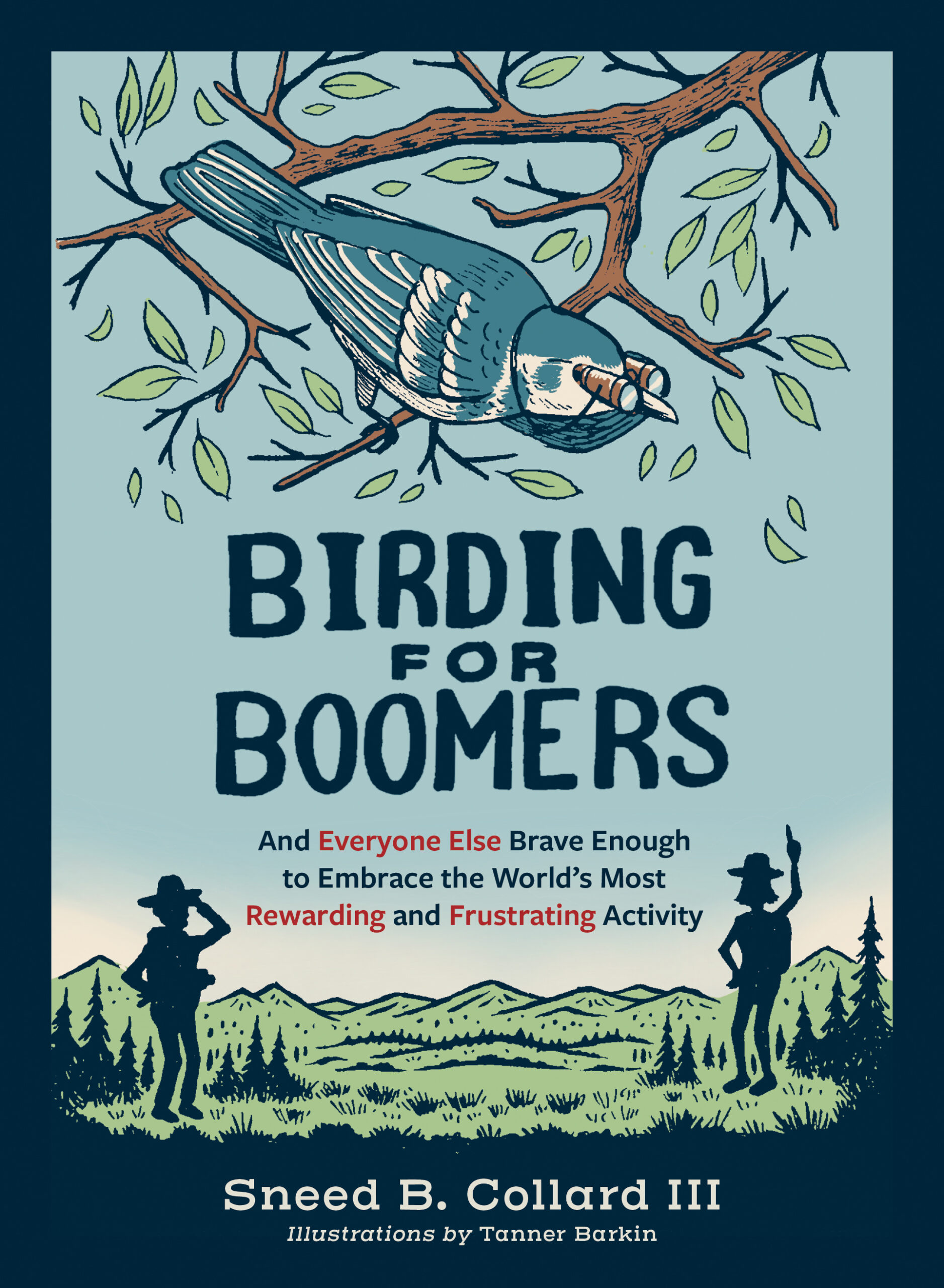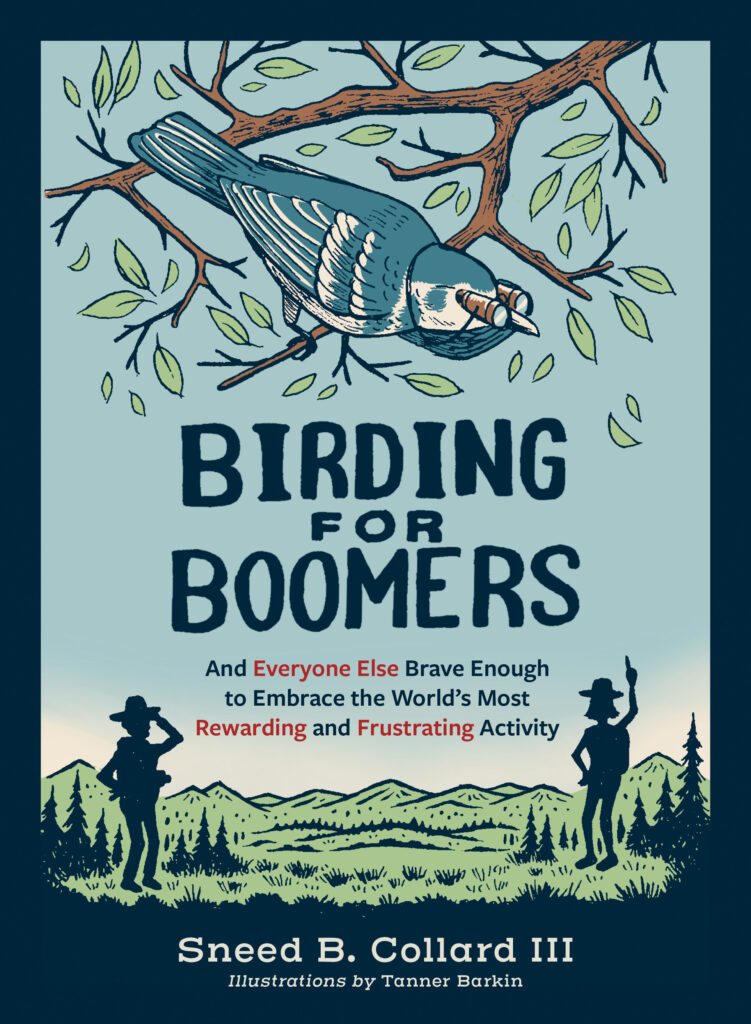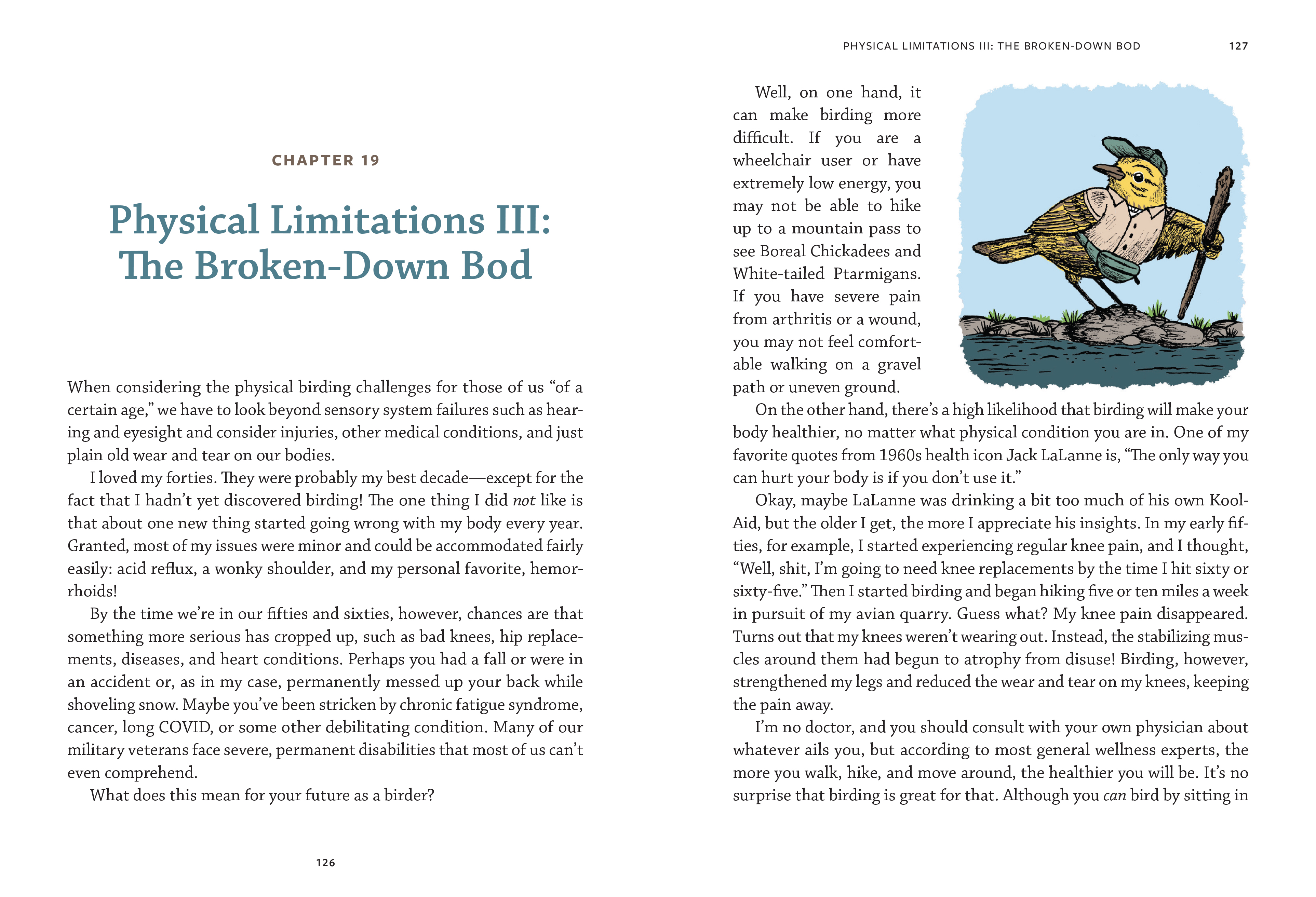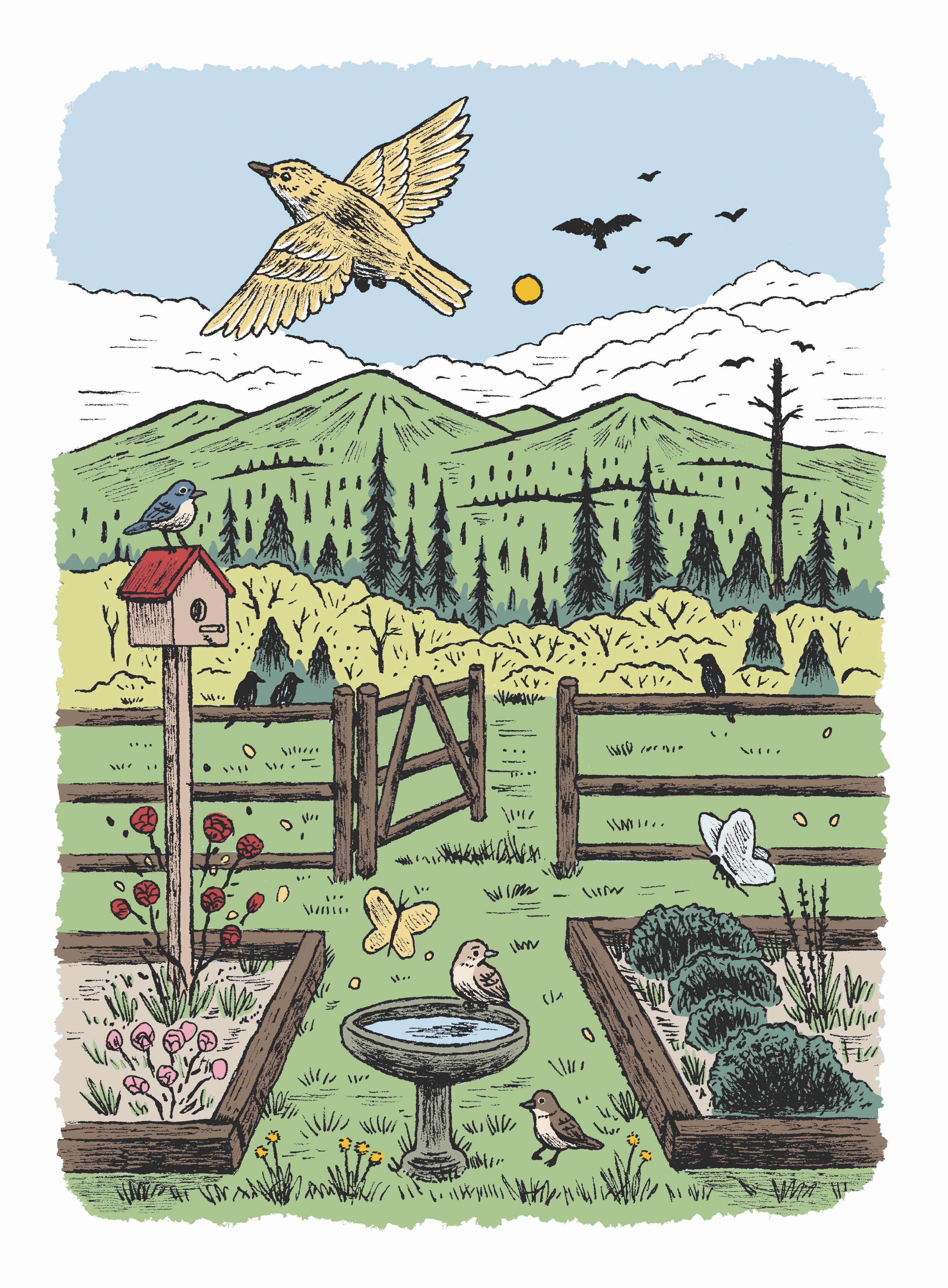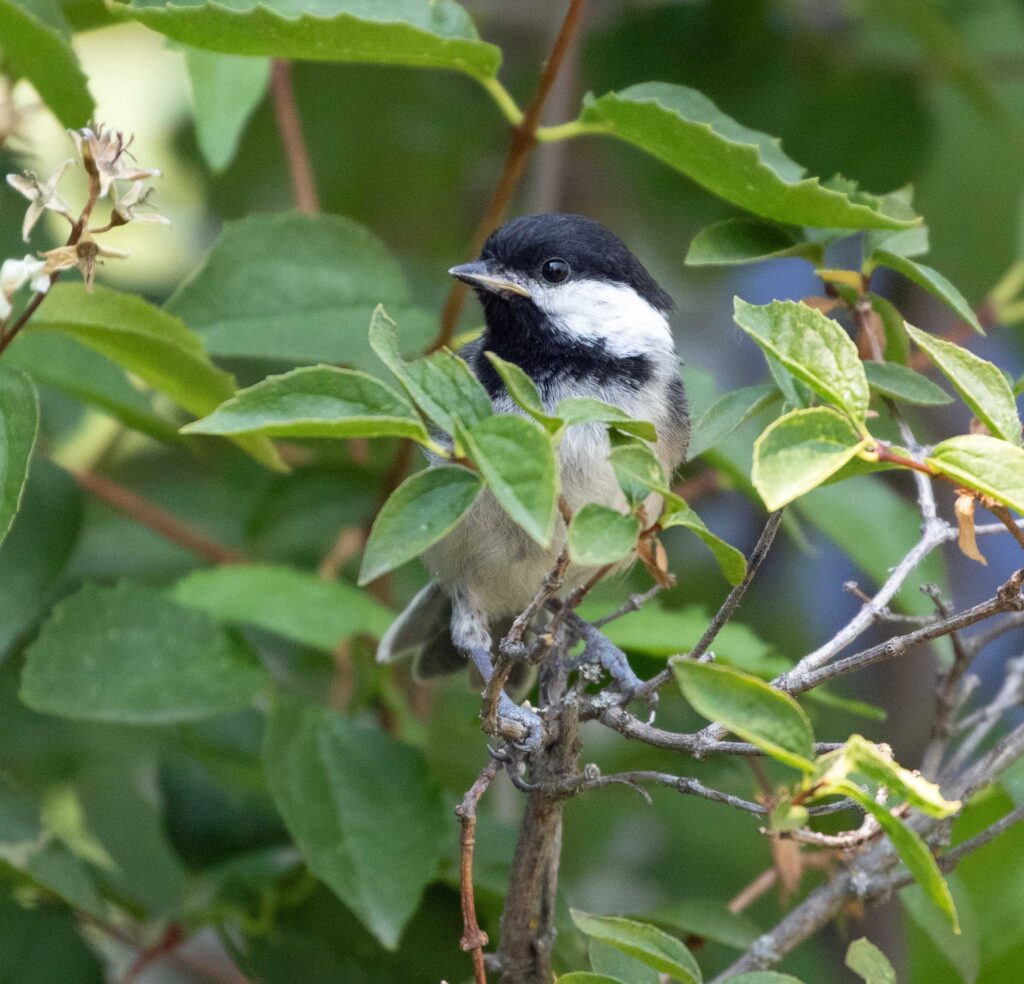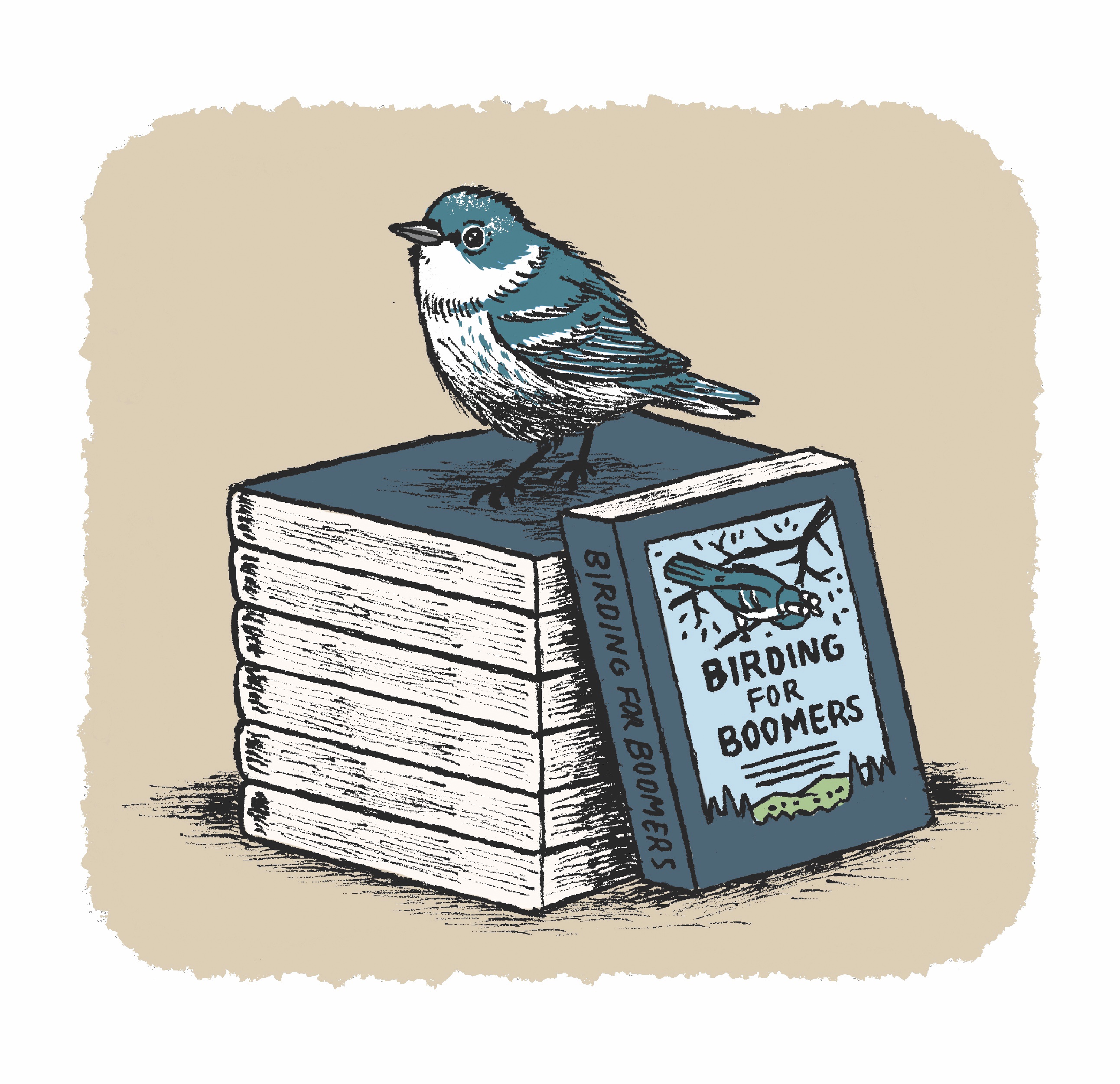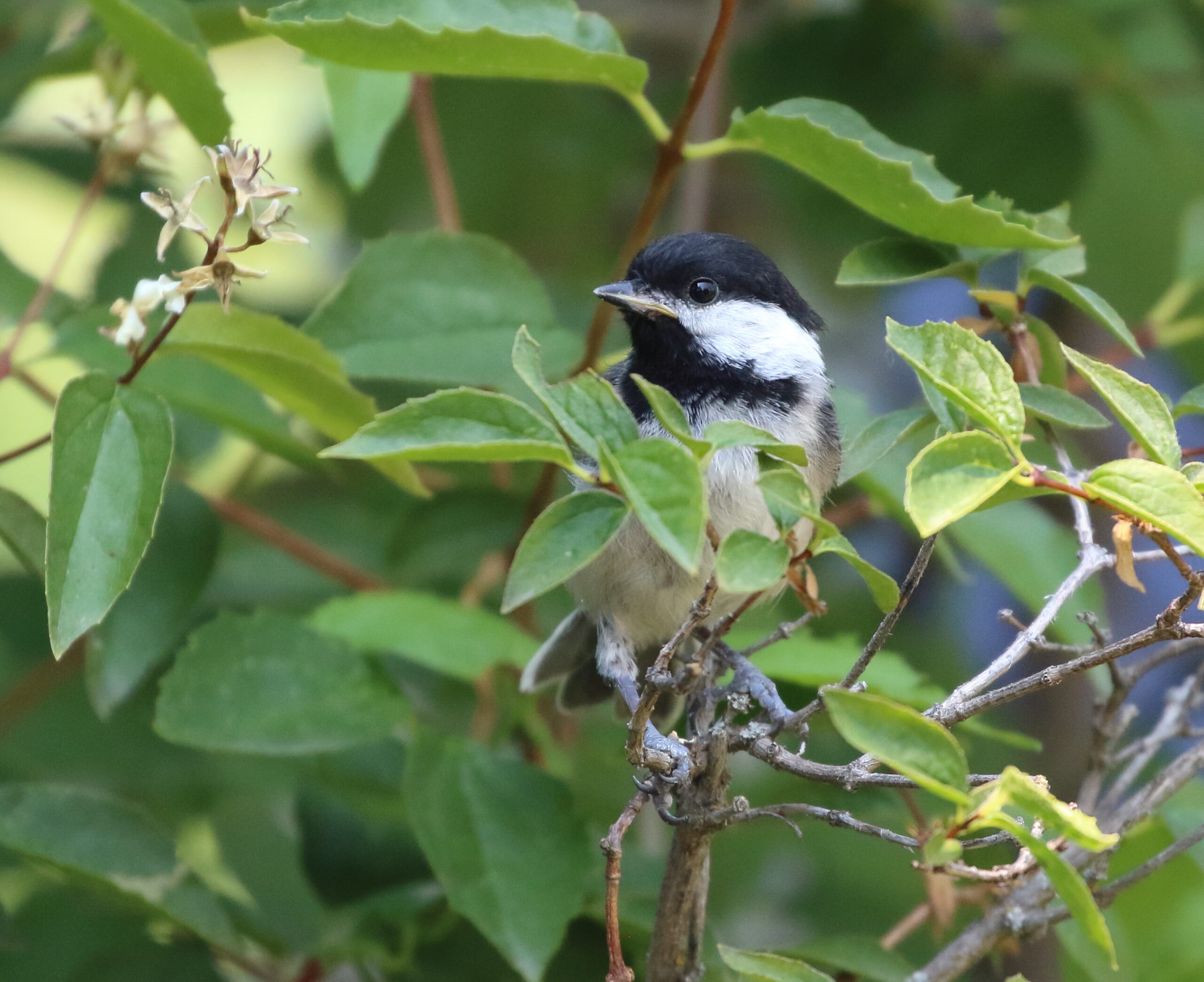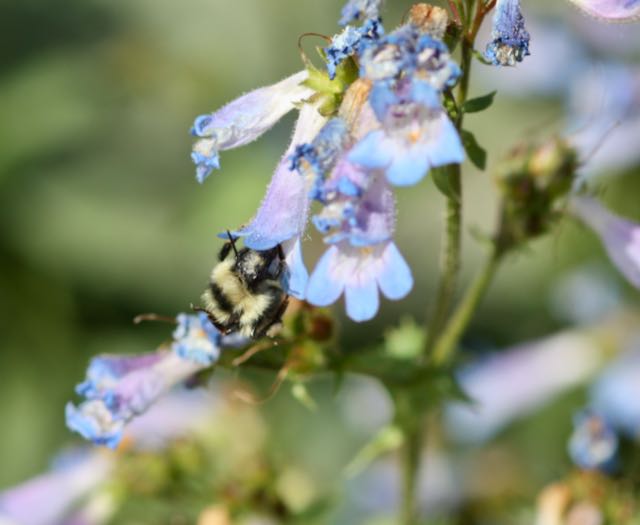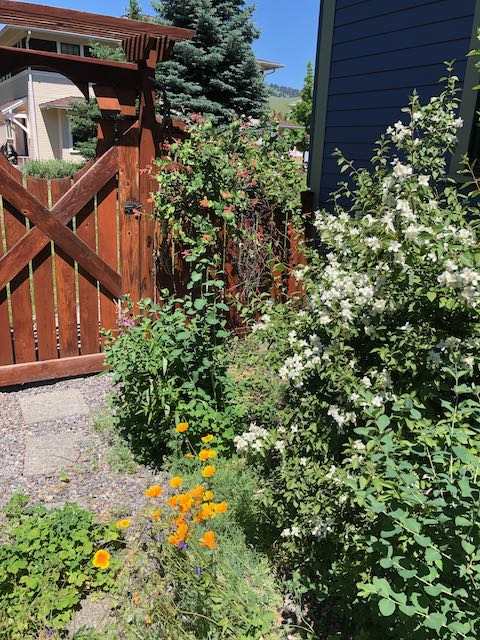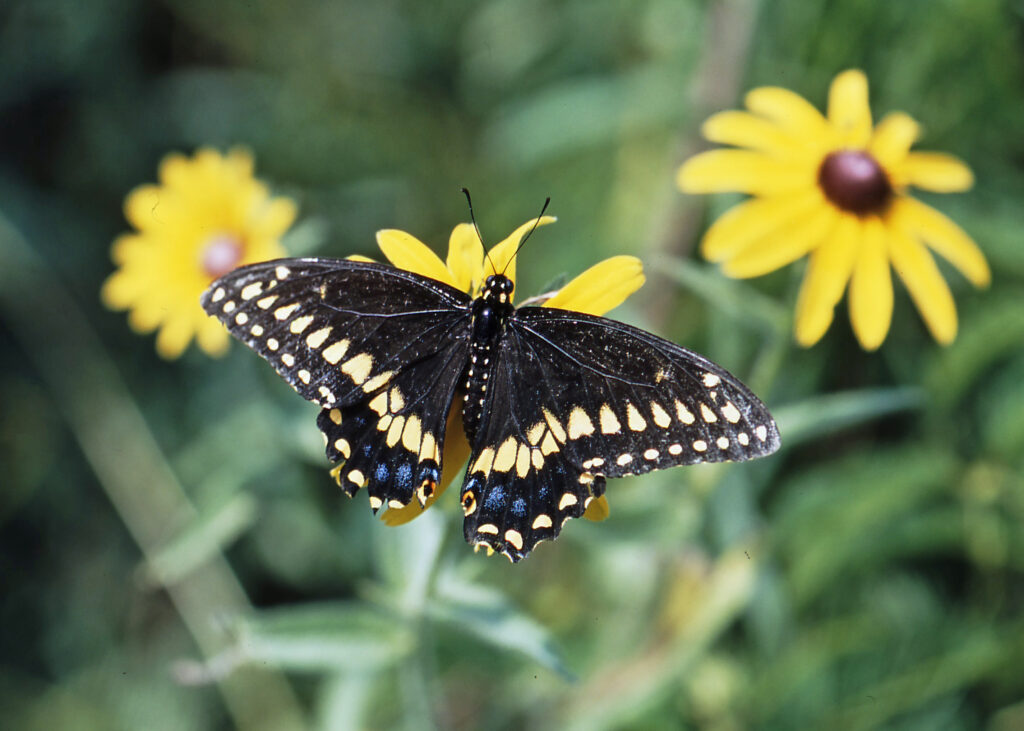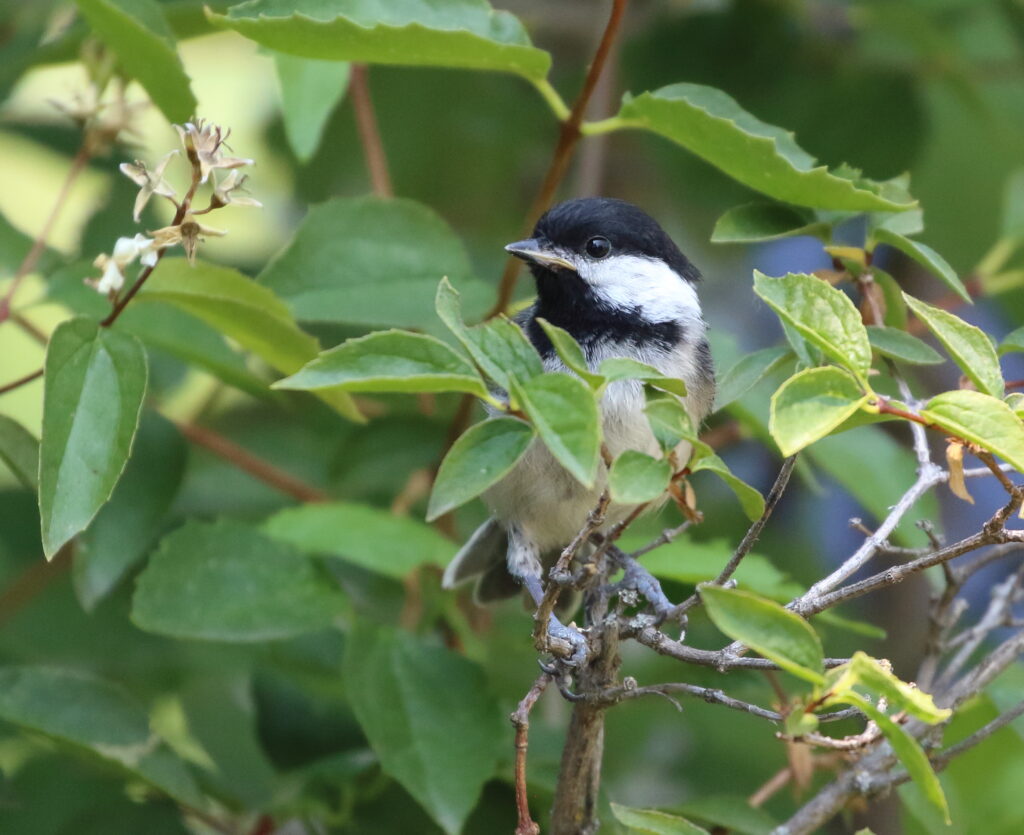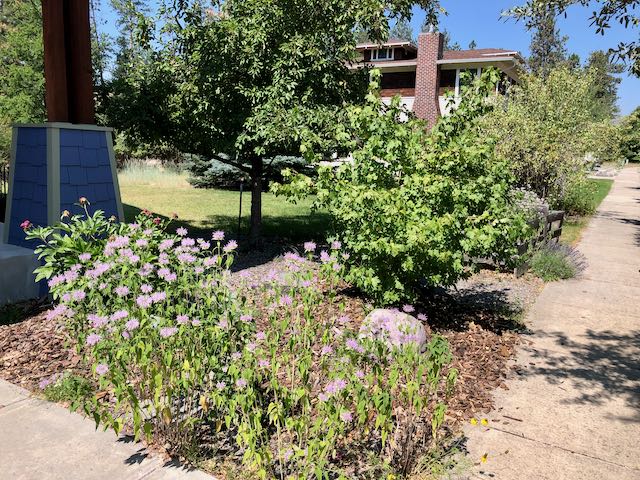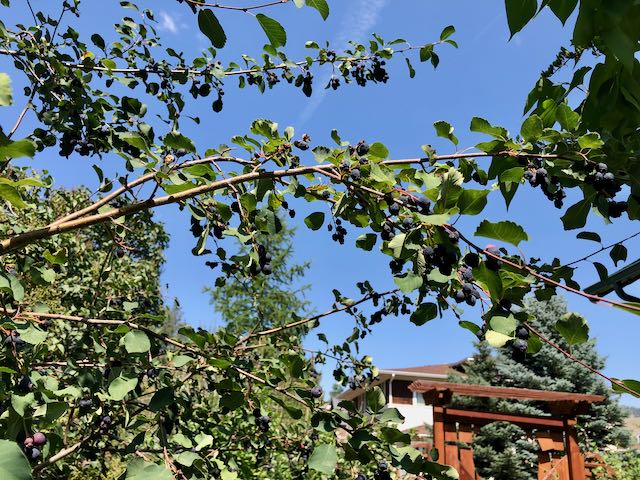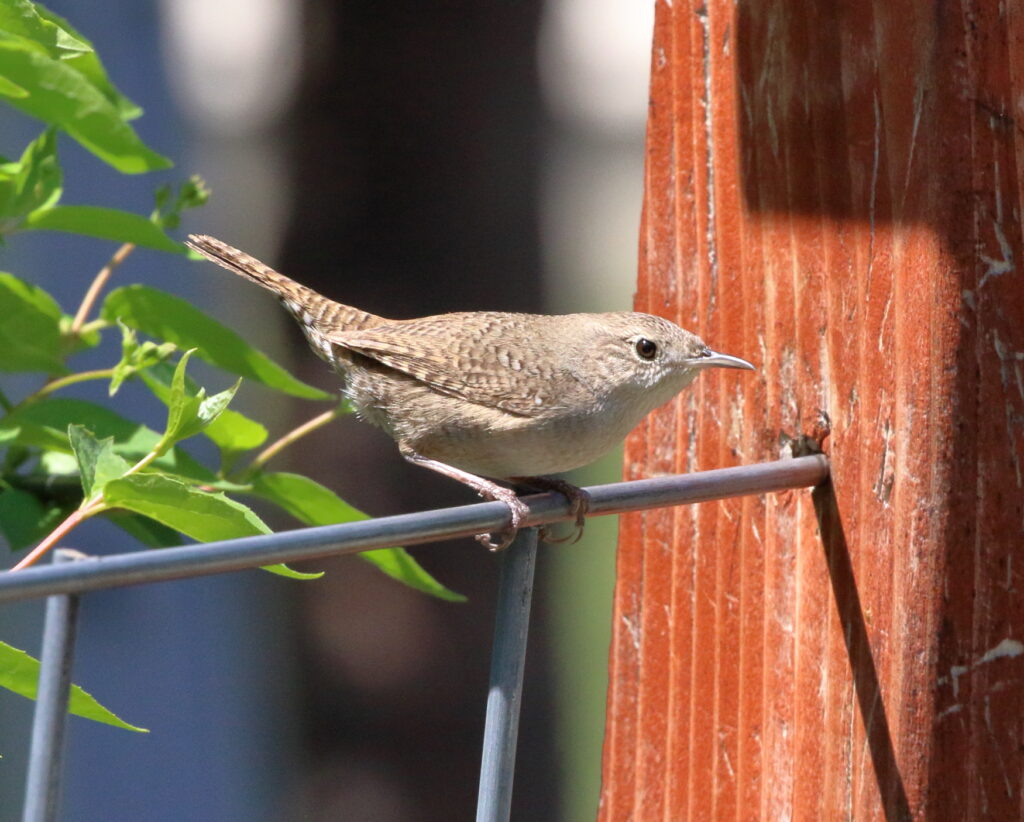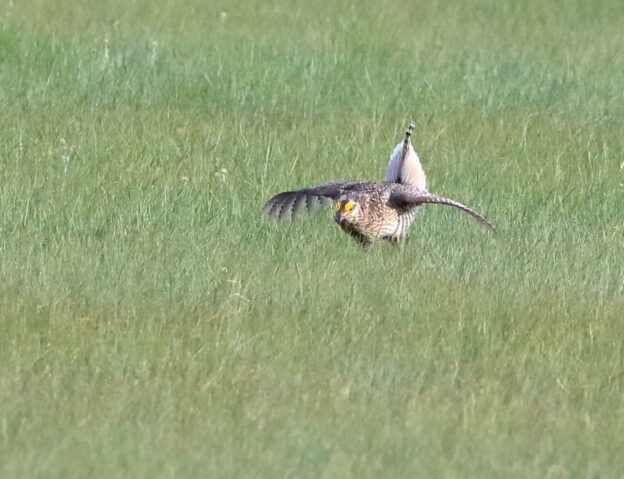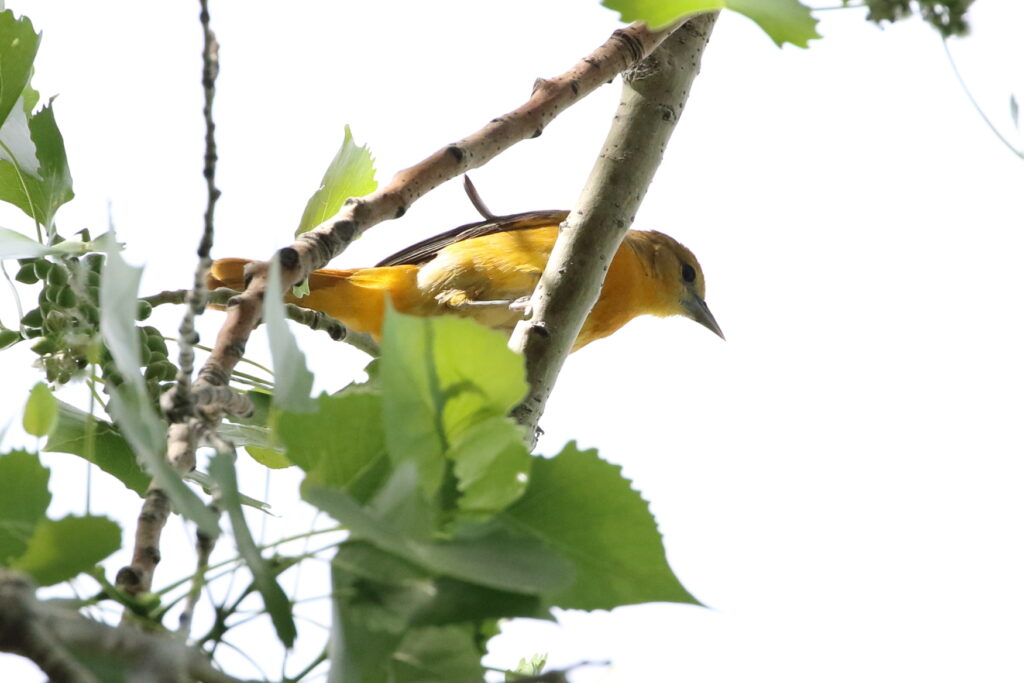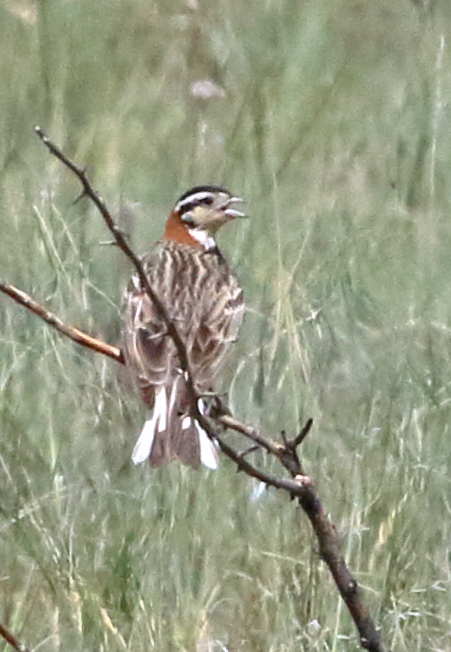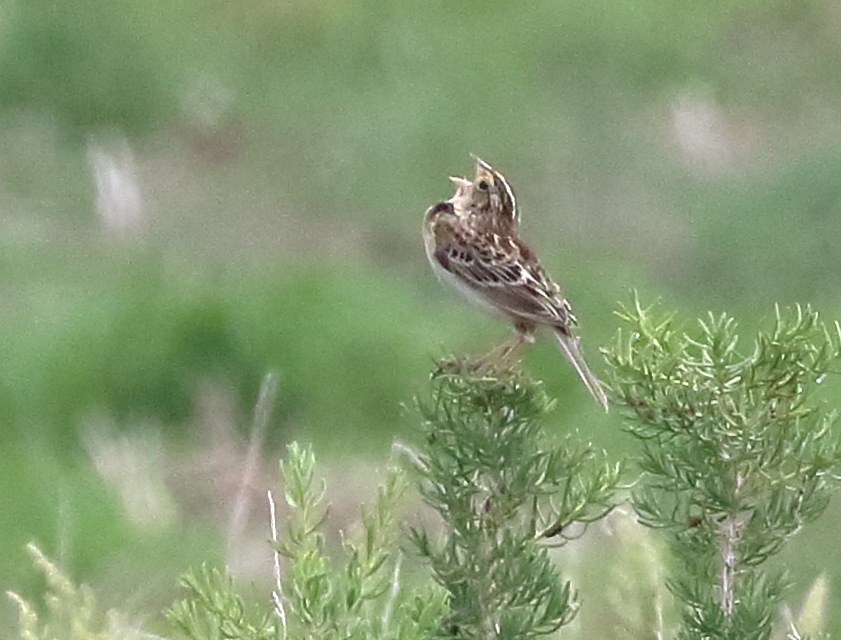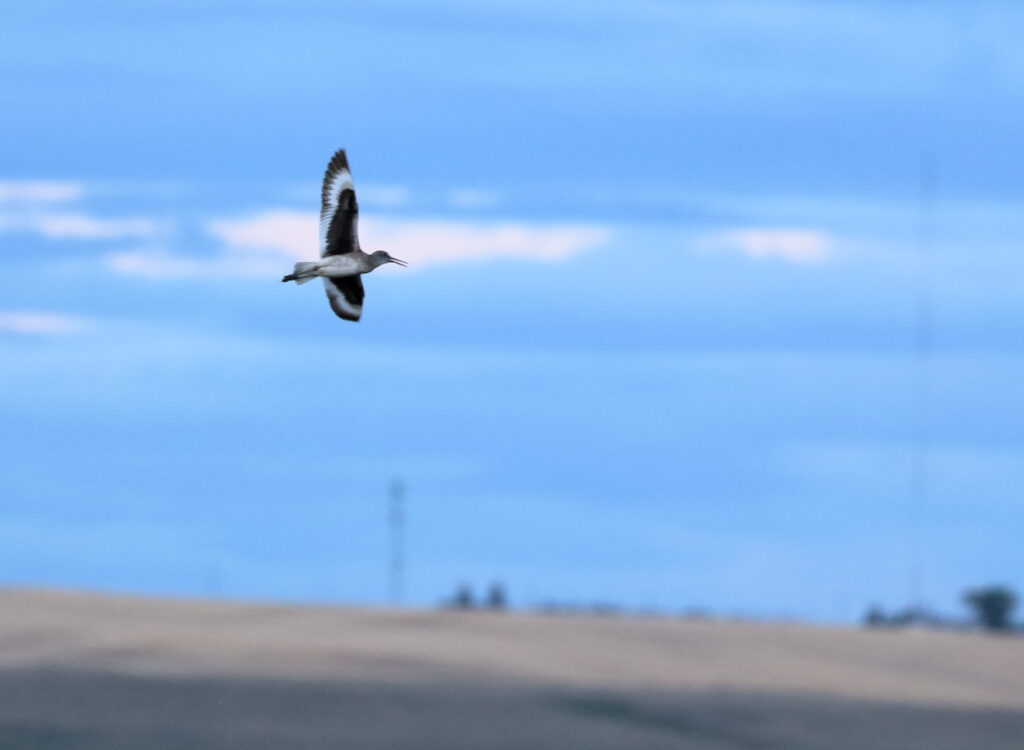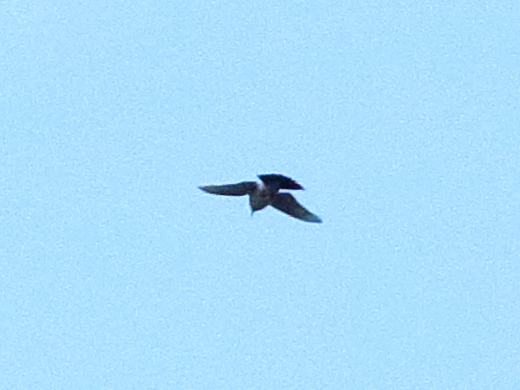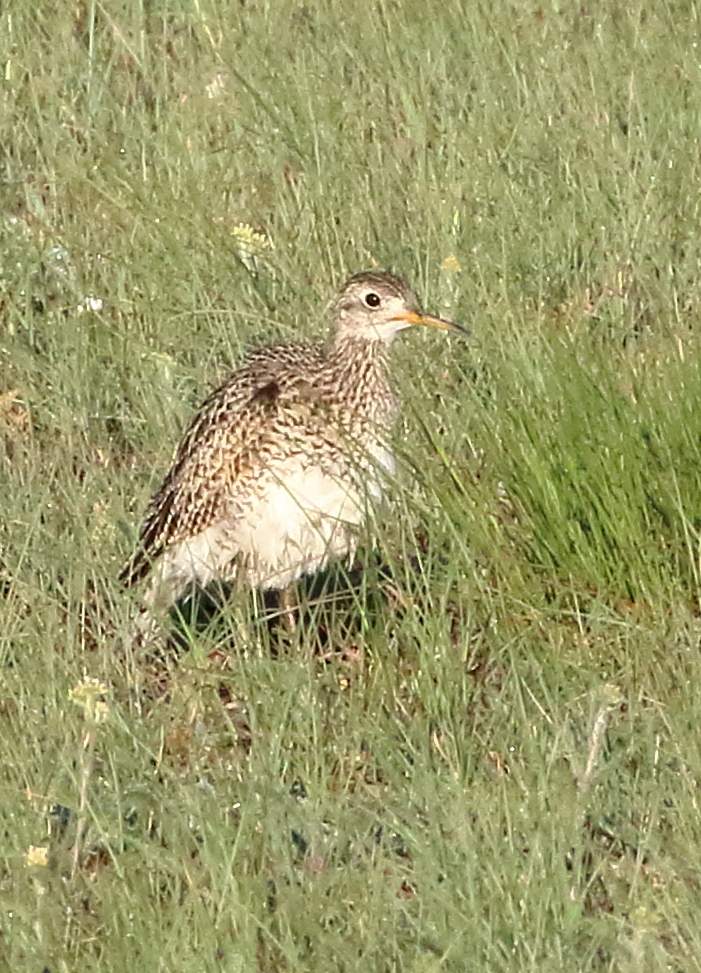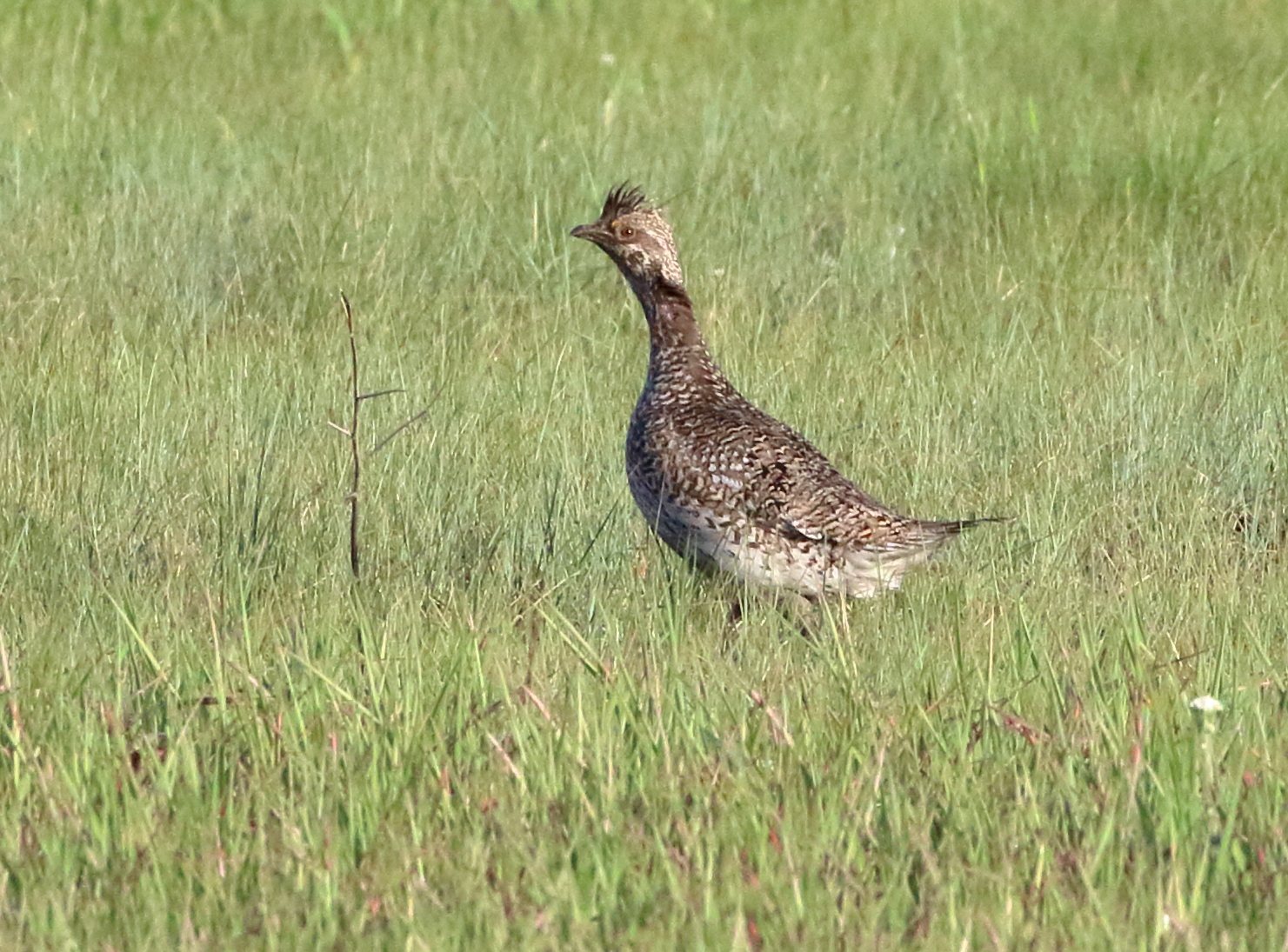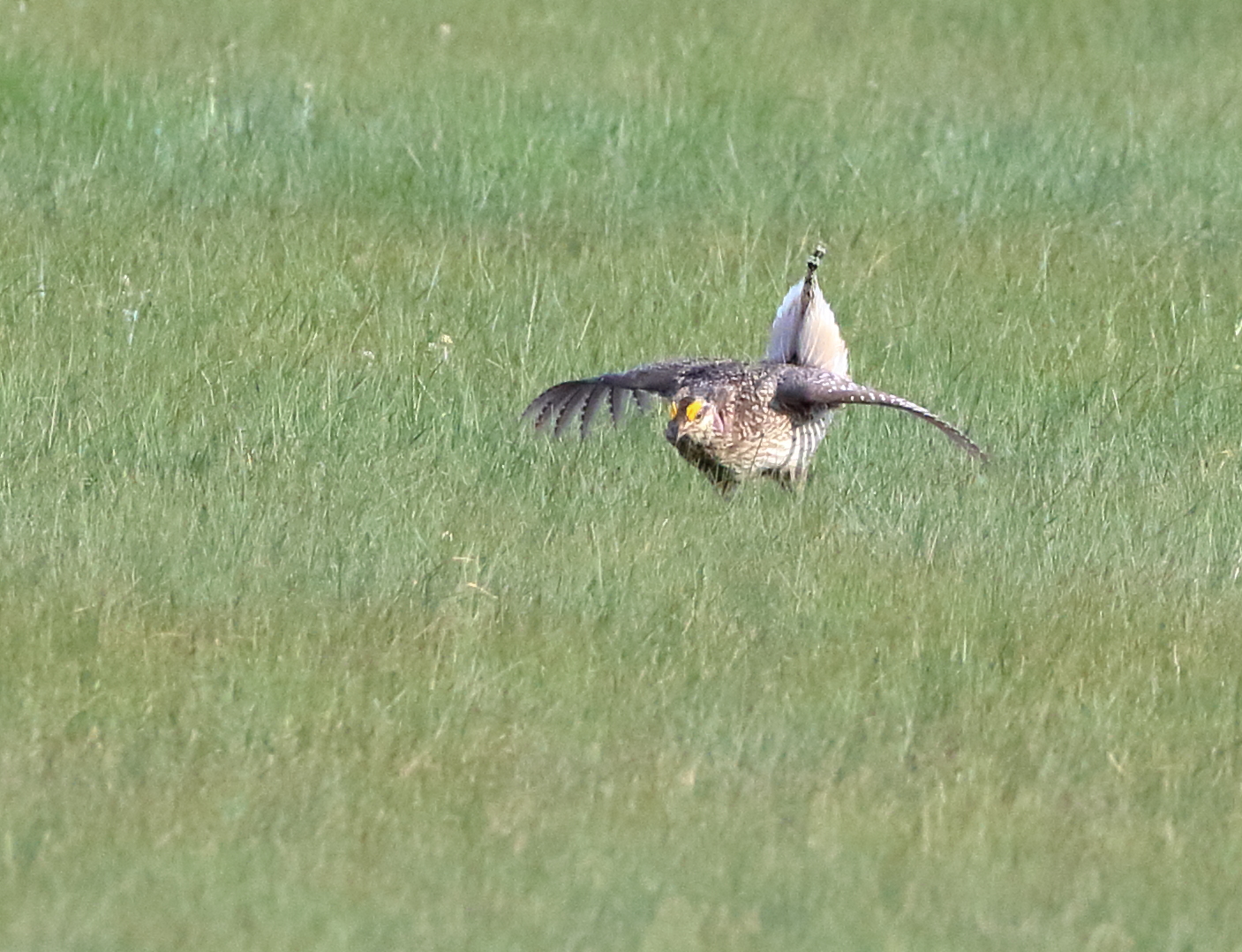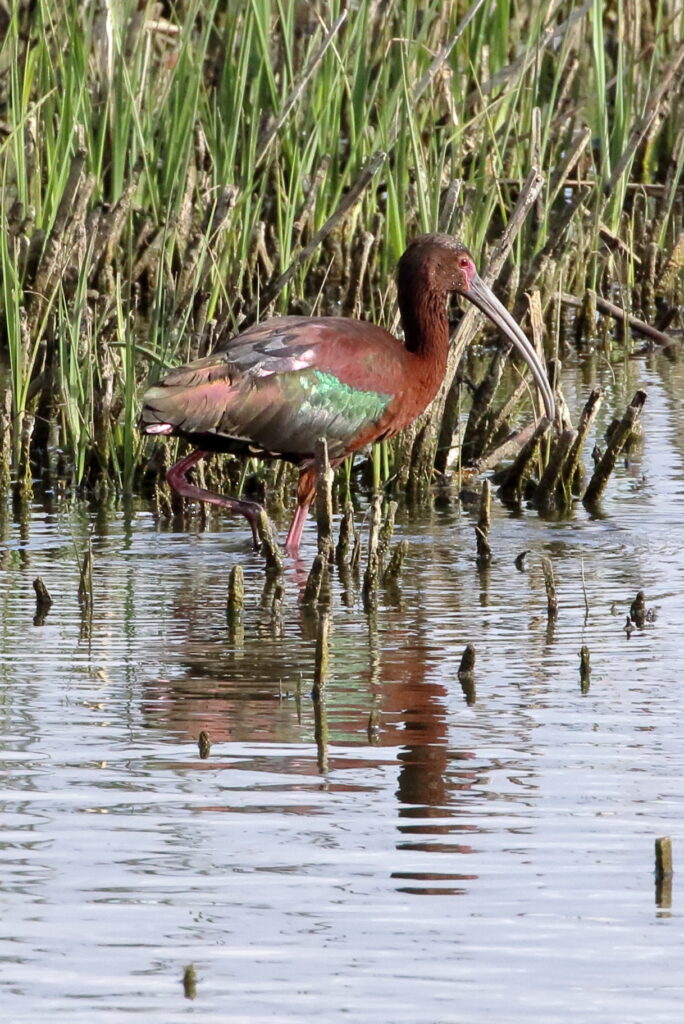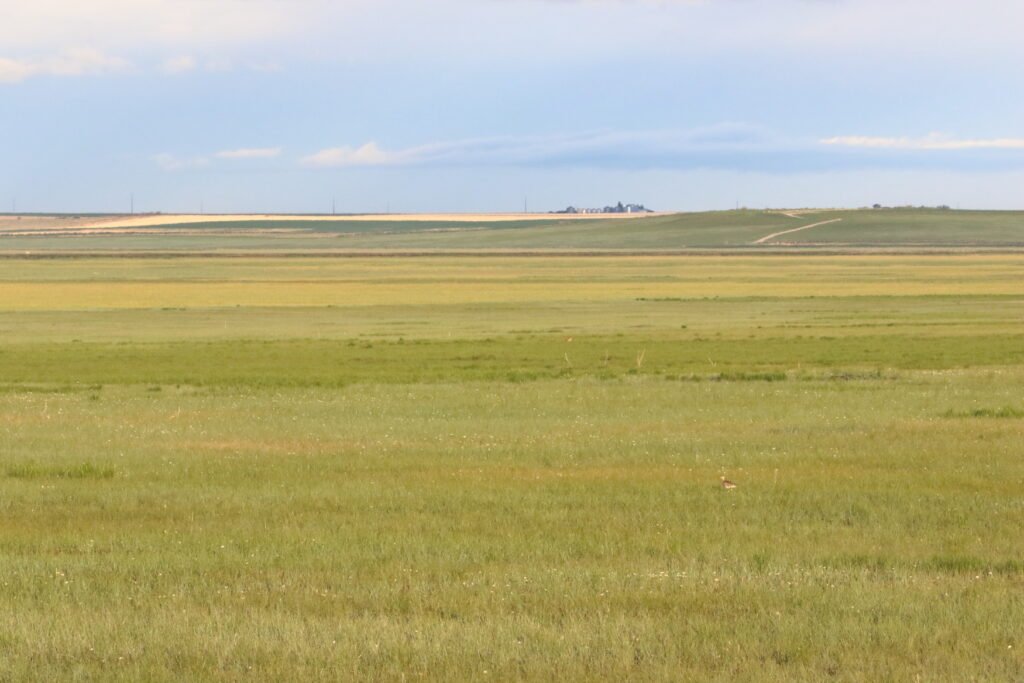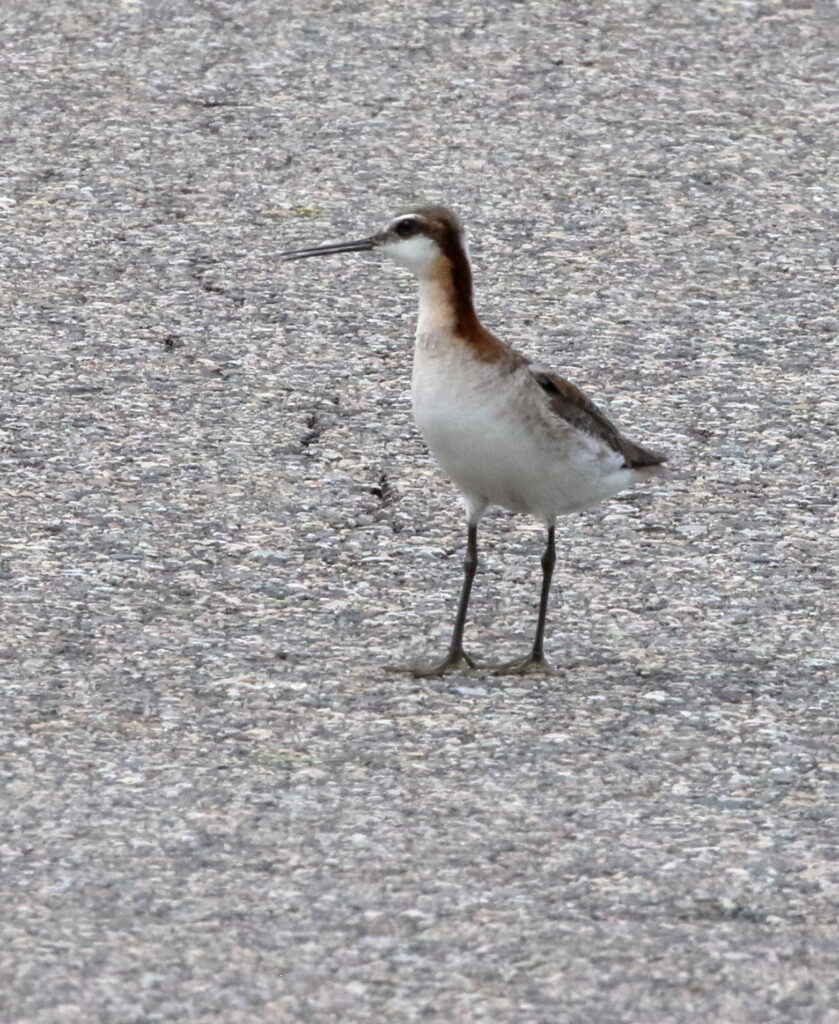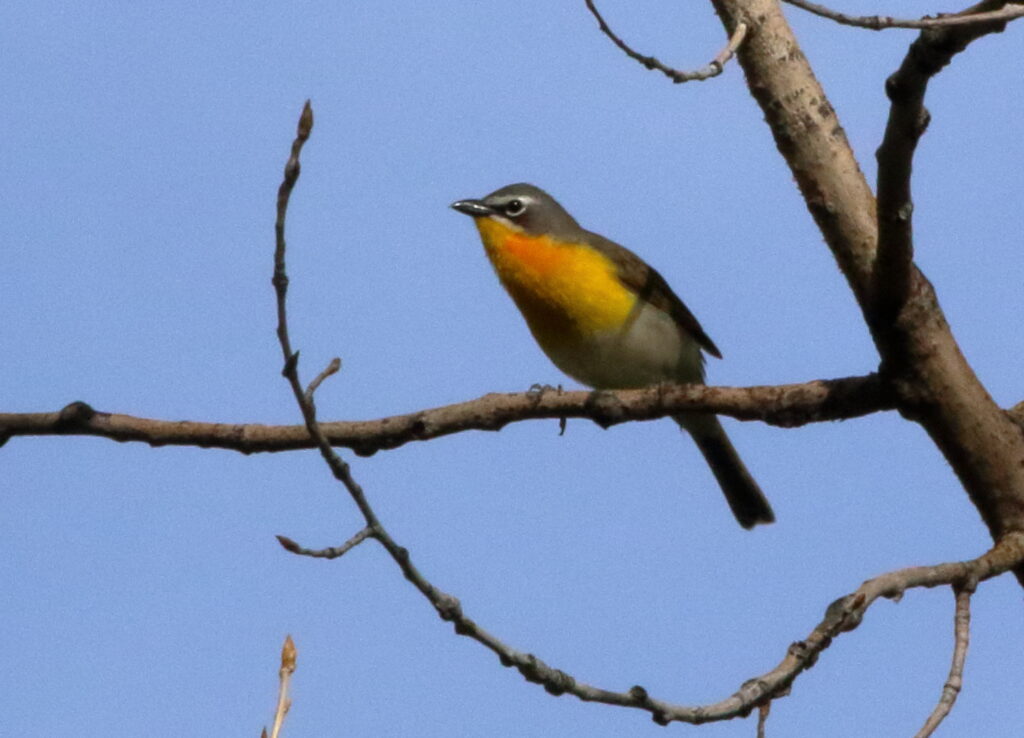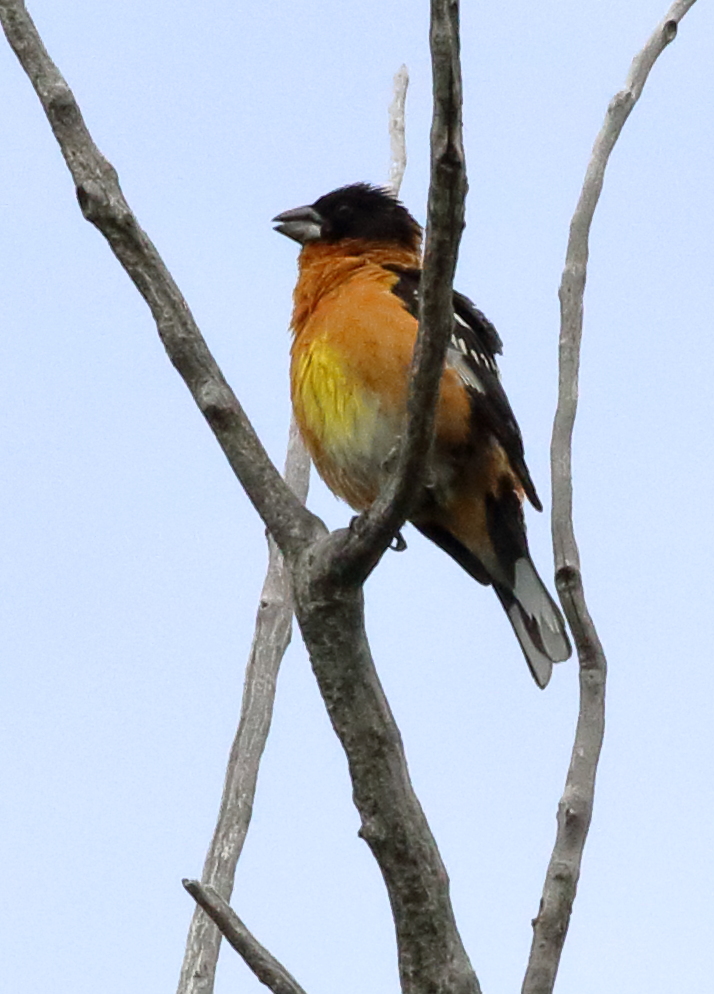After my morning exploring Peveto Woods (see last post), I had intended to visit another favorite coastal Texas location, Sabine Woods (see “Going Cuckoo for Fall Warblers in Texas”). Alas, my long previous travel day caught up with me so I decided to grab a siesta back at my hotel in Winnie. Besides, it didn’t look like the warblers and other migrants were showing up in large numbers, and I reasoned that I wasn’t likely to see much more at Sabine Woods than I’d seen at Peveto that morning. Instead, that afternoon I decided to visit another Texas favorite of Braden’s and mine: Anahuac National Wildlife Refuge.
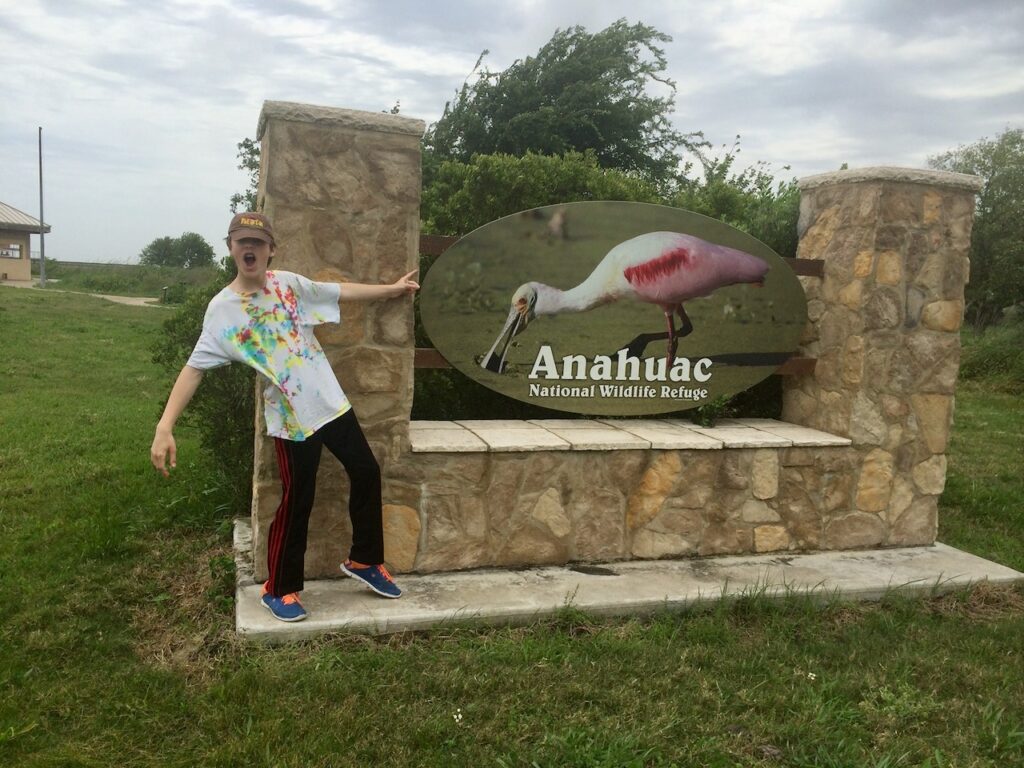
The refuge lies about halfway between Winnie and High Island, and Braden and I had many fond memories of it. During our Big Year in 2016, we’d seen our first Scissor-tailed Flycatcher here, along with our first Common Yellowthroat. I especially liked driving a route called the Shoveler Pond Loop. This afternoon, I didn’t expect any major surprises, but it was a pleasant way to watch Roseate Spoonbills, Common Gallinules, and a variety of other water birds. As I approached the refuge entrance, however, I got my first major surprise: the refuge had a new name! Only in the past few weeks, Anahuac had been renamed the Jocelyn Nungaray NWR. I later looked up how the name change had come about. I like to keep this blog politics-free, but I will just say that the new name resulted from both a tragic story and crass political shenanigans that apparently caught everyone off-guard. Feel free to look it up yourself and draw your own conclusions.
The good news? Shoveler Pond Loop looked better than I’d ever seen it! The loop consists of a 2.5-mile road that circumnavigates a 300-acre wetlands, and the last time I’d visited, in 2021, the latter seemed clogged with vegetation. Not so today. A large area at the loop’s beginning had been cleared out to create wonderful habitat for wading and dabbling birds and as I proceeded, I noticed many other revived sections as well. In preparation to write this post, I called the refuge to make sure that I wasn’t imagining things, and Park Ranger Chris Campbell confirmed that a couple of years ago, they had drained the wetlands and taken steps to remove large areas of cane grass.
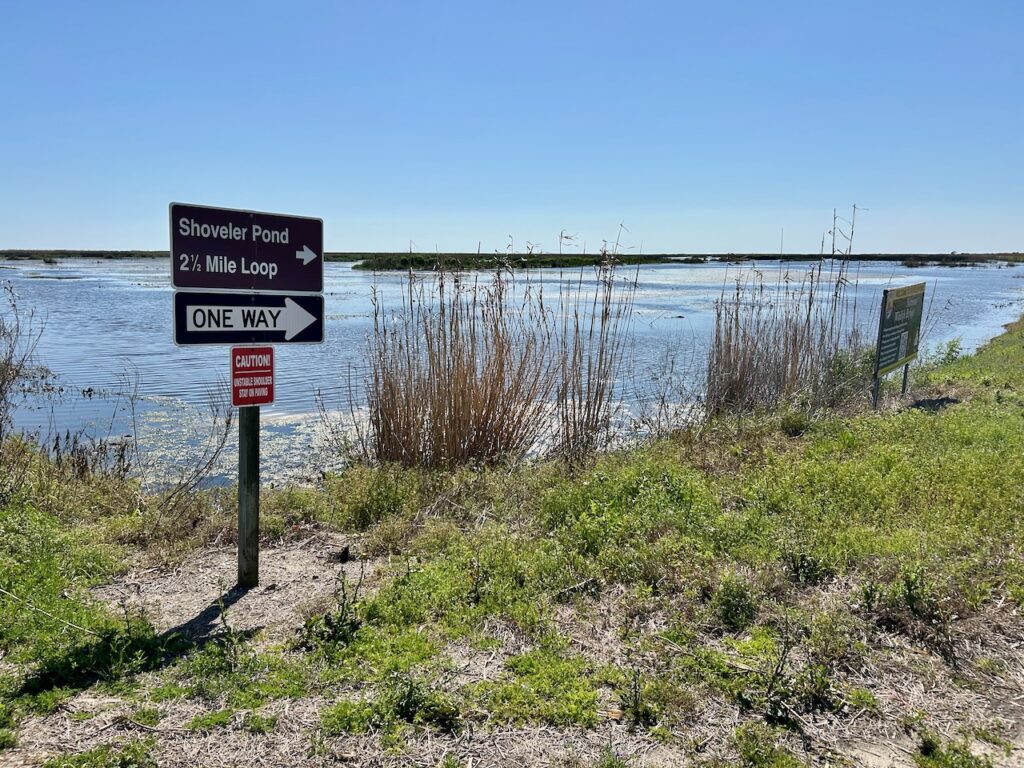
The results looked terrific. As I began making my way around the loop, I immediately noticed large numbers of Black-necked Stilts and dowitchers—probably Long-billed, according to Campbell. Both Greater and Lesser Yellowlegs made a good show of it, too, and it wasn’t long before I began obsessing over some smaller shorbs. I eventually IDed two of these as Dunlins, and was especially pleased to find a Least Sandpiper as well. Alligators also seemed to relish the new-and-improved loop, and I watched with amusement as Black-necked Stilts nonchalantly probed the shallows only a few feet from the six- or eight-foot crocodilians.
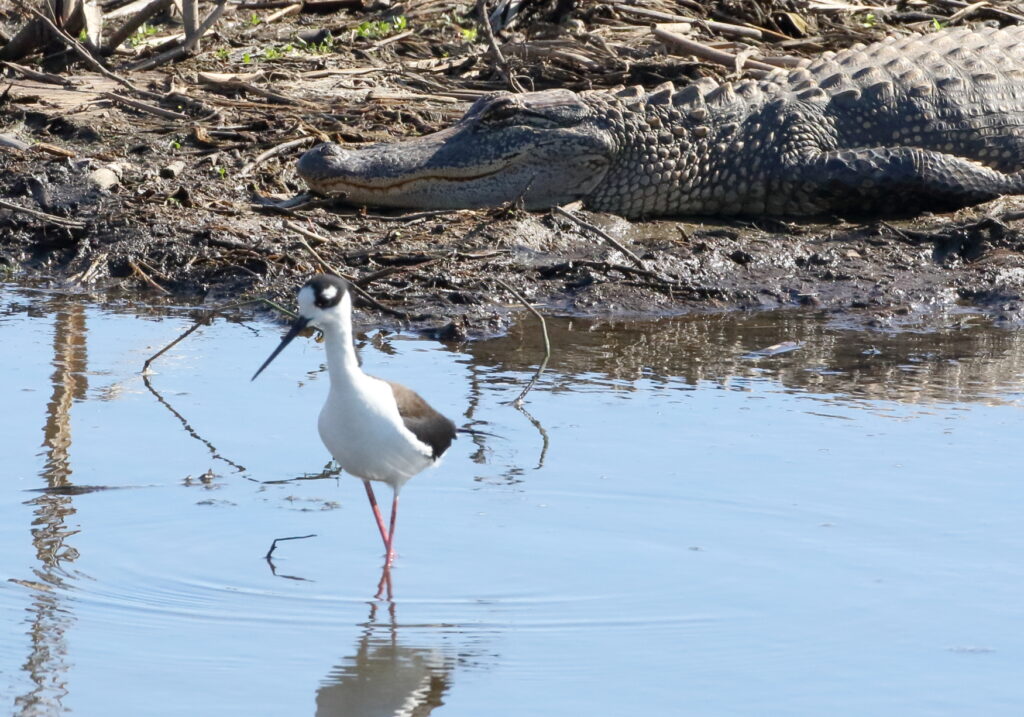
I soon found a great collection of waders including Roseate Spoonbills, Tricolored Herons, Snowy Egrets, and both White and White-faced Ibises. It was when I turned the first corner, however, that the real excitement began.
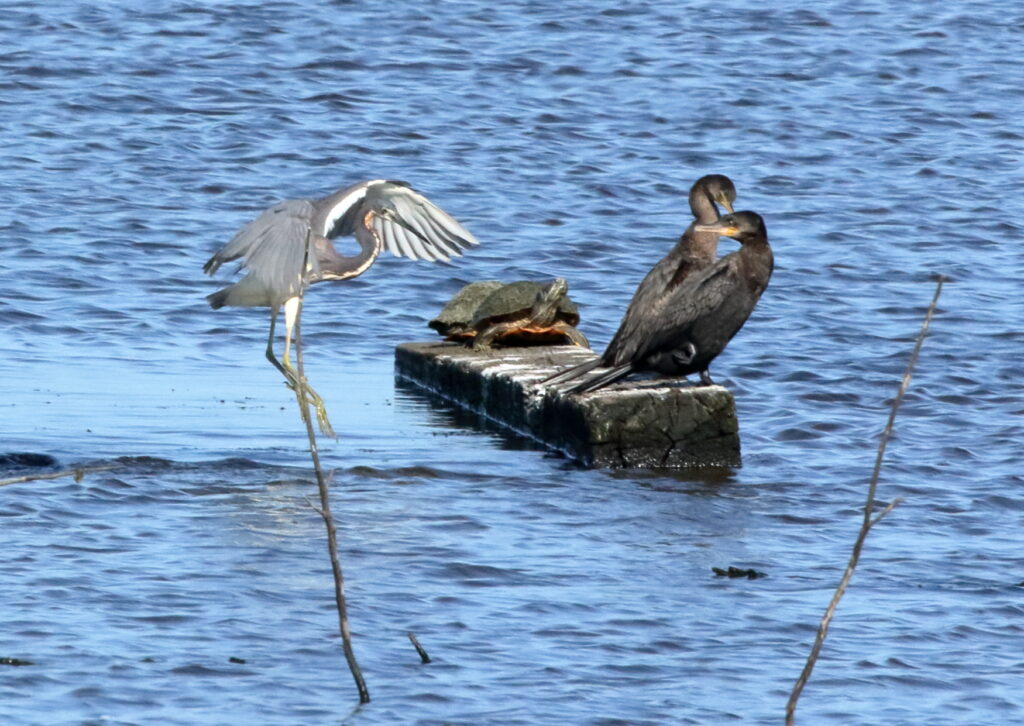
First up? A kind of duck neither Braden nor I had ever seen before: Fulvous Whistling Ducks! “Wow! Lifer!” I exclaimed out loud. For some reason, it never occurred to me that I would see these ducks, but there they were—sitting only fifty feet from their compadres, Black-bellied Whistling Ducks! And the hits were just getting started.
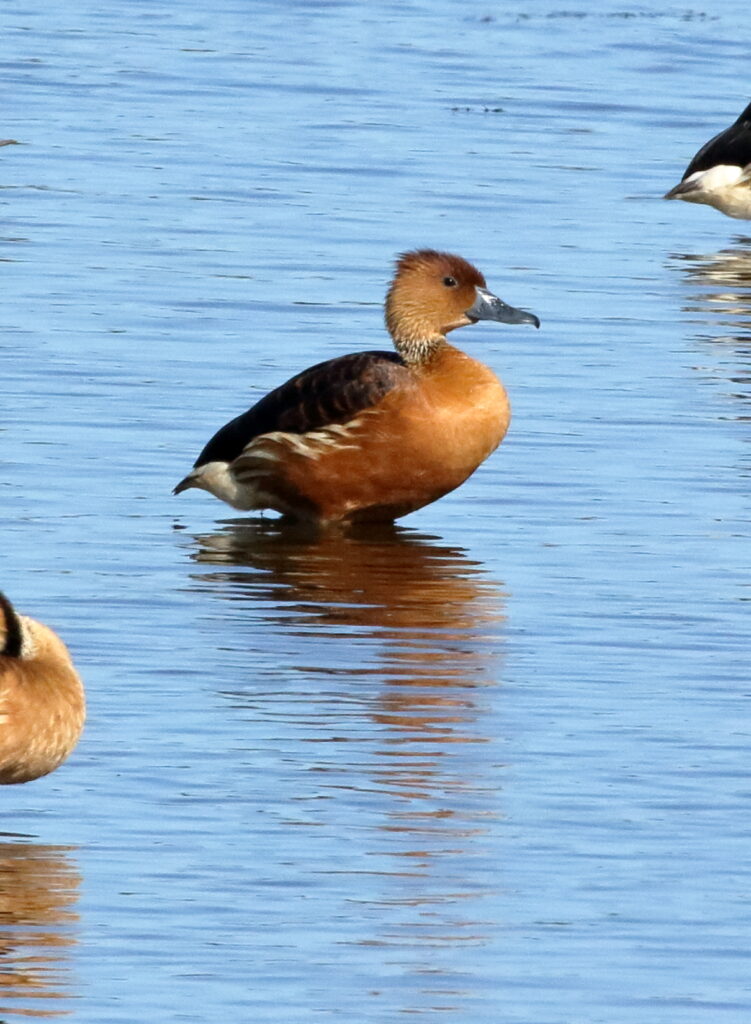

As I rounded the second corner, a narrow canal paralleled the road to my left, and suddenly, a medium-sized, reddish-brown bird flew out from beneath the road to some reeds across the canal. Astonishingly, it was another lifer, one that I recognized immediately: a Least Bittern! One of the smallest members of the heron family, Least Bitterns apparently are not all that rare. Ranger Campbell told me that they are very common year-round at the refuge, but the thing is, they are incredibly shy. I will just tell you that I never really expected to see one, and yet here one was! Not only that, it struck a pleasing pose while I kept my camera shutter clicking.

I had barely started again when I noticed a couple of terns flying around. Generally while I am birding, I ignore terns and gulls until I’ve identified everything else. As one of the terns zoomed by my car, however, I noticed that it had an oddly blunt thick black bill. “No way,” I said, rushing to take some ID photos. My hunch was correct. These were Gull-billed Terns—lifer Gull-billed Terns!
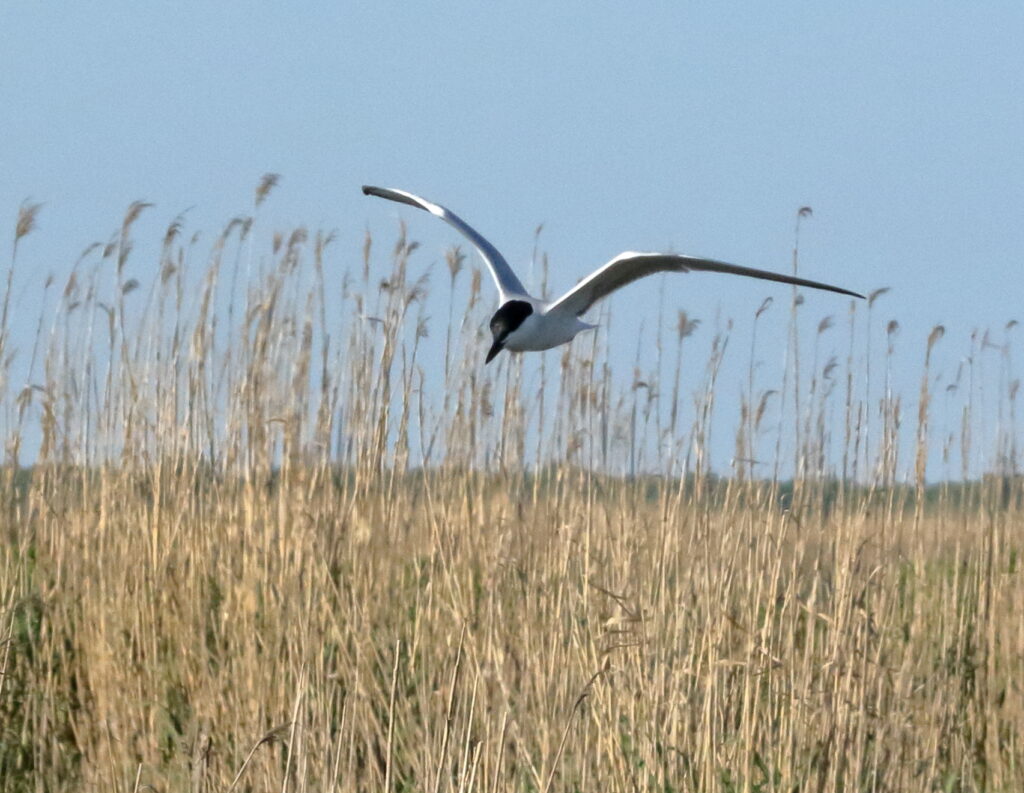
Really, I could hardly believe it. I arrived at Anahuac expecting to see birds that I had seen many times before. Now, within the space of ten minutes, I added three new species to my life list! It seemed so preposterous that I laughed out loud. What’s more, this was still only my first day of birding on my Texas trip. One thing was for sure: I never would have had such success if it weren’t for the hard-working government employees we all depend on. It just shows the wisdom of investing in protecting our natural resources for the common good.


